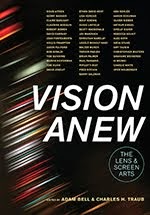
My review of Stasis by Trine Søndergaard (Hatje Cantz, 2014) is now available on photo-eye. You can get the book here.
__________________________________
Both as a solo artist, and in collaboration with Nicolai Howalt, Trine Søndergaard has demonstrated wide range. Whether she is documenting the lives of sex workers, exploring the primal and visually evocative nature of hunting with Howlat, or cataloging the varieties and beauty of women’s traditional garments in formally evocative portraits, Søndergaard’s work has always displayed clarity of focus that is striking. Stasis, a beautiful, but flawed new catalog accompanies a traveling exhibition, and gathers three related bodies of work — Strude (2007-10), Interiors (2010) and Guldnakke (2012) — that all explore themes of stillness and introspection. Although discrete, the three series are all woven together nicely invoking a quiet interiority. Drawing on classical Dutch painting, like Vermeer, as well as other lesser-known examples, and shot in square format, the work has a formal precision that is remarkable. Interiors, shows the vacant hallways and rooms of various abandoned Dutch estates; Guldnakke, shows women in modern dress wearing intricately embroidered traditional gold bonnets, and Strude, presents women from the island of Fano wearing traditional protective facial headdresses. Although Strude is the standout, the individual series that make up Stasis are all strong. It is also worth noting that Søndergaard’s use and sense of light in both the interiors and portraits is as beautiful as it is precise.


The book’s title, Stasis, suggests a state in which things do not change, move or progress. This is initially misleading, but makes sense. Søndergaard directs our attention, though the forceful and rigid construction of her images, to the lingering presence of tradition and the past in the present. In each stripped interior and formally composed portrait, she slows time, forcing us to hover between the past and present, asking us to look more closely. Søndergaard’s work creates a world where the past and present exist in equilibrium — perhaps not unchanging, but precariously balanced.

Unfortunately, despite its beauty, the book has simply too many images. Overloaded with photographs that either repeat or differ only slightly, the book’s tone is quickly belabored. As an overly inclusive exhibition catalog, the otherwise powerful images and series suffer, diminishing what should be a great book. Reduced by half, the book would be remarkable. The book’s essay by Mieke Bal also does not help. Although exceptionally erudite and far-reaching, the essay suffers from the same bloat as the book. It explains and digresses, then digresses and explains some more.
The near misses are always the hardest to endure. Between the exceptional printing and remarkable imagery, Stasis should be a wonderful book. At the same time, it is foolish to wish for a different book than the one that sits before you. Despite its flaws, Stasis is a beautiful book full of many striking images and beautiful large reproductions that will be enjoyed not only by fans of Søndergaard, but viewers new to her work.
Please note: This review originally appeared on photo-eye on July 24th, 2014. You can get the book here.





